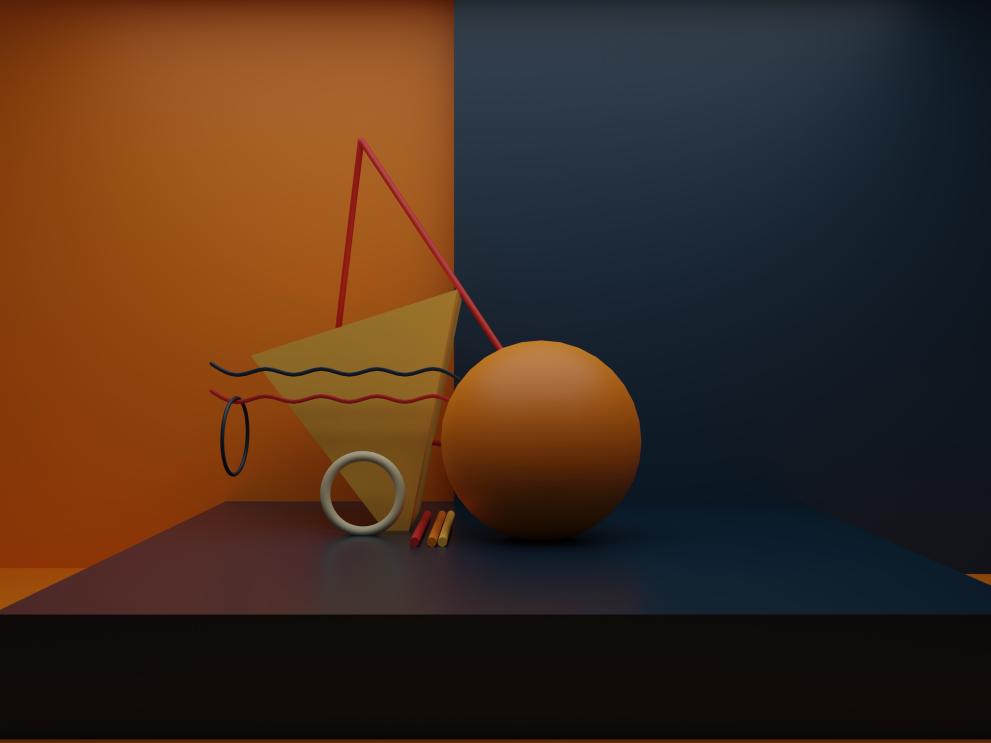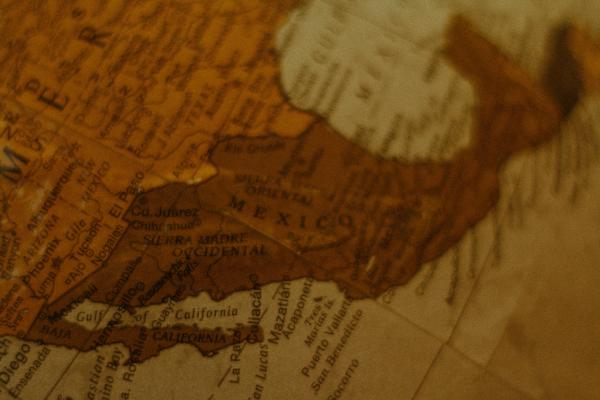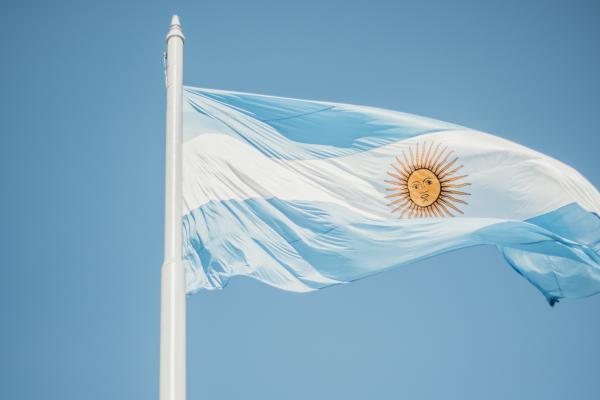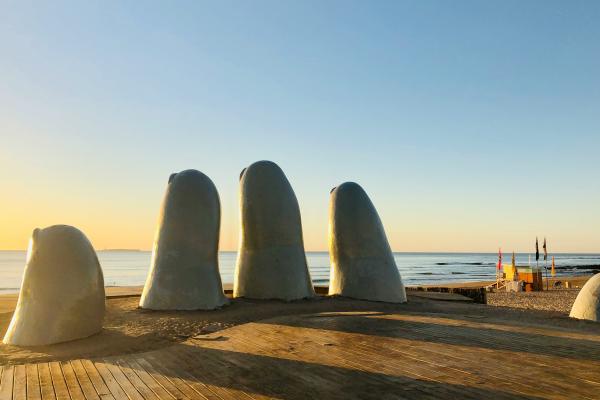
IP expert at the Latin America IP SME Helpdesk
In the realm of business and an ever-more globalised economy, trade marks stand as beacons of identity, encapsulating a brand's essence and reputation. In Latin America, a region rich with diverse markets and burgeoning opportunities, trade marks play an integral role in establishing a market presence. However, it is not merely about logos and names; non-traditional trade marks are gaining traction. From the tones of a jingle to the vibrant hues defining a product, non-traditional trade marks provide EU SMEs with a unique canvas to paint their brand image.
Non-traditional trade marks are any trade marks that do not fall into the traditional categories of word or figurative marks. This can include things like color, sound, smell, and taste. In a globalised and competitive international market, non-traditional trade marks could offer EU SMEs opportunities for brand differentiation and an innovative edge against competitors. However, non-traditional trade marks are not uniformly protected in Latin America and EU SMEs need to be aware of the different legal requirements and challenges for registering them in the region before entering those markets.
Non-traditional TMs available per country in Latin America:
|
Countries TM types |
AG |
BO |
BR |
CL |
CO |
CR |
CU |
DO |
EC |
SV |
GT |
HN |
MX |
NI |
PA |
PY |
PE |
UY |
VE |
|
3D/shape |
YES |
YES |
YES |
YES |
YES |
YES |
YES |
YES |
YES |
YES |
YES |
YES |
YES |
YES |
YES |
YES |
YES |
YES |
NO |
|
Colour per se |
NO |
NO |
NO |
NO |
NO |
NO |
NO |
NO |
YES |
NO |
YES |
NO |
NO |
NO |
NO |
NO |
NO |
NO |
NO |
|
Colour position/combination |
YES |
YES |
NO |
YES |
YES |
YES |
NO |
YES |
YES |
YES |
YES |
YES |
YES |
YES |
YES |
YES |
YES |
YES |
NO |
|
Holograms |
NO |
NO |
NO |
NO |
NO |
NO |
NO |
NO |
NO |
NO |
NO |
NO |
YES |
NO |
YES |
NO |
NO |
NO |
NO |
|
Trade dress |
NO |
NO |
NO |
NO |
NO |
NO |
NO |
NO |
NO |
YES |
YES |
YES |
YES |
YES |
NO |
YES |
NO |
NO |
NO |
|
Smell/olfactory |
YES |
YES |
NO |
YES |
YES |
NO |
NO |
YES |
YES |
YES |
YES |
NO |
YES |
YES |
YES |
NO |
YES |
NO |
NO |
|
Sound |
YES |
YES |
NO |
YES |
YES |
YES |
NO |
YES |
YES |
YES |
YES |
NO |
YES |
YES |
YES |
YES |
YES |
YES |
YES |
|
Tactile |
YES |
YES |
NO |
NO |
YES |
NO |
NO |
NO |
YES |
NO |
NO |
NO |
NO |
NO |
NO |
NO |
YES |
NO |
NO |
|
Taste |
NO |
NO |
NO |
NO |
NO |
NO |
NO |
NO |
NO |
NO |
NO |
NO |
NO |
NO |
YES |
NO |
NO |
NO |
NO |
In order: Argentina, Bolivia, Brazil, Chile, Colombia, Costa Rica, Cuba, Dominican Republic, Ecuador, El Salvador, Guatemala, Honduras, Mexico, Nicaragua, Panama, Paraguay, Peru, Uruguay, Venezuela.
Types of non-traditional trade marks
The table above/below includes the types of non-traditional trade marks expressly recognised in the the listed countries’ legislations. However, in practice, some of the IP offices in those countries would also accept trade marks for registration that are not expressly mentioned in their national law. Therefore, should you have a trade mark you are unsure could be protected in a specific Latin American country, do not hesitate to contact our IP experts. Our Helpline service provides you with professional IP advice – customised, straightforward, and free of charge - within 3 working days.
Three-dimensional (3D) or shape trade marks
These are the most widely-accepted non-traditional trade marks across Latin America, and in Brazil, they are the only non-traditional marks accepted. A 3D trade mark usually refers to one consisting of a three-dimensional shape, including containers, packaging, the product itself or its appearance - think the Toblerone chocolate bar. There are some nuances here, depending on the specific country, such as in Argentina you can only protect containers and packaging of the product and not the shape of the product itself, but there are quite a few other Latin American countries, which allow for that. There are also some that do not provide any protection for 3D marks, for example Chile and Venezuela. However, one common denominator in the countries that do protect 3D marks is that the shape must be distinctive and be able to serve as a badge of origin for your products. An alternative option for protecting the shape of your products could be through an industrial design registration. If you are unsure which intellectual property right is the most appropriate for the protection of your products, please contact our Helpline.
Smell/olfactory marks
As their name suggests, these marks consist of the smell of the product. In contrast to the European Union, where smell marks are not currently accepted because of the difficulty of representing them graphically, they are accepted in certain Latin American countries. In Argentina, for example, applicants are asked to file things such as chemical composition of the smell, samples of the product, labels and any other documentation that might help to identify the specific smell. An example of this type of trade mark is the smell of Hasbro’s Play-Doh modelling clay, which is registered in Mexico with the description: “an unmistakable smell formed by a sweet, somewhat mossy combination of a fragrance with vanilla tones, with small cherry accents and the natural smell of a salty wheat-based dough”.
Sound marks
These are trade marks consisting exclusively of a sound or combination of sounds. It could be a jingle that consumers connect with your company or any other type of sound that is capable of being perceived as a trade mark by consumers. One of the most famous sound marks of all time is the lion’s roar from MGM’s intro.
Trade dress
Trade dress, also known as “get-up”, is one of the newest types of non-traditional marks introduced in Latin America and refers to the overall look and feel of a product or service. It encompasses all visual elements, including the packaging of goods, their design or configuration, colour scheme, as well as the décor and environment in which they are sold. For the purposes of this article’s categorisation, we have considered only the décor and environment of establishments as “trade dress” in the table above. The other types of trade dress are covered by 3D/shape or a combination of other types of trade marks. Trade dress in this sense is expressly mentioned in the law of a few Latin American countries, but even if it is not possible to register it as a trade mark, there might be alternative ways to protect and defend the “look and feel” of your products and services, through other IP rights (e.g. designs, copyright) or unfair competition claims.
Colour marks
What is meant by the term “colour marks” is trade marks consisting either of a single colour (without any contours or shape), or of a combination of colours. The object of such trade marks is the specific shade of the colours and their arrangement. In general, no Latin American country allows the registration of a single colour, with some nuances - for example, the Andean Community (Bolivia, Colombia, Ecuador and Peru) allows for it as long as it is delimited by a shape. On the other hand, there are other countries that explicitly prohibit the registration of a single colour in their national law, but could allow it in certain exceptional circumstances (e.g. Argentina, Dominican Republic).
Other
Other non-traditional trade marks could be tactile (perceptible to the touch), taste, position (the specific way in which the mark is placed on the product), pattern (a set of elements that are repeated regularly), motion (a movement or a change in the position of the elements or colours of the mark) and some sub-categories or mixtures of the aforementioned (such as multimedia marks, holograms, etc.).
Challenges and opportunities for registering and enforcing non-traditional trade marks in Latin America
Non-traditional trade marks could be an attractive option for businesses looking to differentiate themselves in the Latin American market. These trade marks could help with marketing efforts, raising brand awareness and getting ahead of the competition. With the development of Latin American countries’ economy and IP legislation, many EU SMEs have faced the reality that when entering the Latin American market, an identical or similar trade mark registration already exists, which prevents the registration of their own brand. This brings the need for rebranding or change of strategy for that specific market. Non-traditional trade marks could come in handy here, as their popularity is not that big yet, and businesses could use them as a means for differentiation.
Non-traditional trade marks offer a powerful tool for EU SMEs. They appeal to more than just the eye, they go beyond visual elements and create a complete experience for the consumer, appealing to their senses and emotions. By leveraging sensory marketing strategies that incorporate smell, sound, tactile, and taste elements, as well as visual ones, non-traditional trade marks can connect with consumers on a deeper level and make them loyal to the brand. In the digital era, non-traditional trade marks can also benefit from holographic, motion, and multimedia elements to create a more immersive and effective brand experience. And as the metaverse continues to grow in popularity, non-traditional marks can also be used in this new virtual space to create unique and memorable brand experiences. By combining these strategies, EU SMEs can stand out in the Latin American market and achieve greater success in their expansion efforts.
Contact us
While non-traditional trade marks offer exciting opportunities for EU SMEs looking to expand into Latin America, there are unique challenges to consider when it comes to registration, defence, and enforcement. As a relatively new phenomenon in the region, local IP laws and regulations may not be well-equipped to handle these marks. Therefore, it is essential for EU SMEs to carefully consider these challenges and seek the guidance of an experienced IP professional before entering the Latin American market. If you do not know where to start, our Helpline is here to assist you, offering free and fast consultations in English, French, Italian, German, or Portuguese (subject to expert availability).
Details
- Publication date
- 23 October 2023
- Author
- European Innovation Council and SMEs Executive Agency




